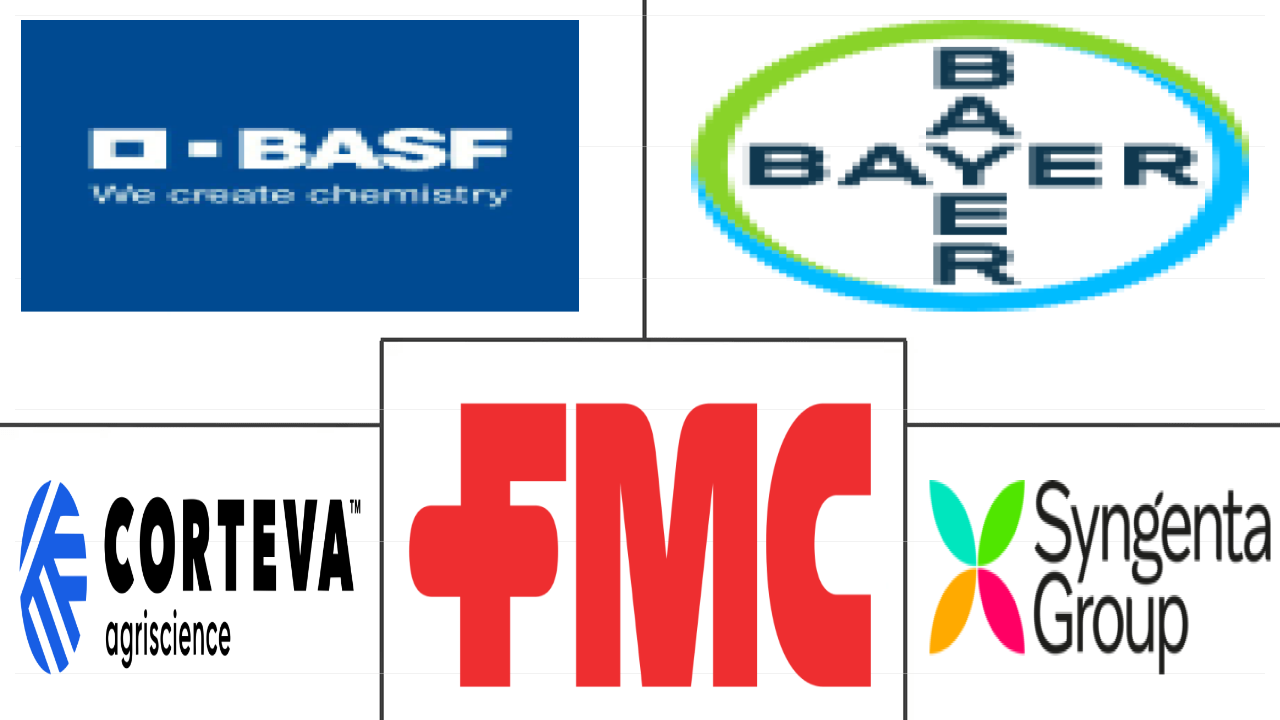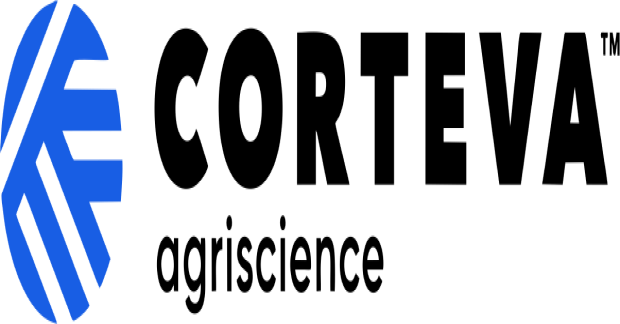Market Size of africa herbicide Industry
| Icons | Lable | Value |
|---|---|---|
|
|
Study Period | 2017 - 2029 |
|
|
Market Size (2024) | USD 1.18 Billion |
|
|
Market Size (2029) | USD 1.45 Billion |
|
|
Largest Share by Application Mode | Soil Treatment |
|
|
CAGR (2024 - 2029) | 4.17 % |
|
|
Largest Share by Country | South Africa |
|
|
Market Concentration | Low |
Major Players |
||

|
||
|
*Disclaimer: Major Players sorted in no particular order |
Africa Herbicide Market Analysis
The Africa Herbicide Market size is estimated at 1.18 billion USD in 2024, and is expected to reach 1.45 billion USD by 2029, growing at a CAGR of 4.17% during the forecast period (2024-2029).
1.18 Billion
Market Size in 2024 (USD)
1.45 Billion
Market Size in 2029 (USD)
8.09 %
CAGR (2017-2023)
4.17 %
CAGR (2024-2029)
Largest Segment by Application Mode
46.57 %
value share, Soil Treatment, 2023
To combat this challenge and minimize crop losses caused by weeds, soil treatment of herbicides plays a crucial role by targeting these species during their early growth stages.
Largest Segment by Crop Type
45.83 %
value share, Grains & Cereals, 2023
Maize is a major cereal crop grown in the region, occupying approximately 40.7 million hectares. It contributed 40% of the cereal production in the region in 2022.
Largest Segment By Country
27.95 %
value share, South Africa, 2023
The demand for herbicides in South Africa is increasing with the adoption of herbicide-resistant cultivars and the increasing resistance of weeds to herbicides.
Leading Market Player 1
7.97 %
market share, Syngenta Group, 2022

The company invests more than USD 1.3 billion per year globally in R&D to develop advanced, innovative technologies and agrochemical products to address farmers’ challenges.
Leading Market Player 2
7.33 %
market share, Corteva Agriscience, 2022

Through programs like Open Innovation and collaborations, the company focuses on fundamentally reframing solutions to work together to provide innovative herbicides.
Adoption of various application modes majorly depends upon the crop growth stage and weed type
- Africa's agricultural sector is facing various challenges, among which weeds are becoming a major threat to the sector. The region's intensive agricultural practices, no-tillage, and monoculture practices in major crops help various weed species to grow and hamper crop growth. Due to various socio-economic factors, farmers implement herbicide application through different application modes for better weed management and enhanced crop growth.
- The herbicide soil treatment application mode is majorly adopted by farmers as a precaution to control weeds in their early growth stages, which reduces further herbicide use and production costs. The market value for this application mode is expected to increase by USD 153.1 million during the forecast period.
- Foliar herbicide application is the next most adopted application mode and common traditional practice for controlling broadleaf weeds in various crops, which is effective in rapid action by targeting the weed species. The use of the foliar method is expected to grow during the forecast period, accounting for a market value growth of USD 100.4 million.
- Increasing water shortages and advancements in micro-irrigation systems help in the rise of the chemigation mode, which provides the uniform distribution of chemical herbicide applications for better weed management. The market for the chemigation mode will grow by USD 54.4 million during 2023-2029.
- The adoption of herbicide fumigation is limited due to its associated risks, such as spray drift and potential harm to human health. On the other hand, it has been found to effectively control weeds by penetrating the soil and other areas.
- The herbicide market in the region is expected to grow by USD 312.3 million during the forecast period, driven by the increasing weed infestations.
The risk associated with the traditional weeding methods is increasing the need for herbicides in the region
- The African agricultural sector is majorly concentrated in countries like South Africa, Ethiopia, Nigeria, Egypt, and Kenya. Agriculture is one of the most important sectors, and the majority of the population works in it. The sector contributes around 14% to Sub-Saharan Africa's GDP. Among various biotic and abiotic challenges, weeds are becoming a major threat to the agricultural sector. Traditional weed management practices are associated with being time-consuming, becoming more expensive, and needing more labor, and these factors divert farmers to adopt herbicides as a primary method for weed control.
- There was a significant growth in herbicide consumption during the historical period. In 2017, it was 162.0 thousand metric ton, which increased to 198.1 thousand metric ton in 2022. The consumption growth is majorly attributed to the increasing weed infestations and rise in herbicide adoption. On average, every year, weeds are causing yield loss of up to 25% in Africa. The increasing yield losses further drive the herbicide consumption growth by 9,611 metric ton during 2023-2029.
- Grain and cereal crop growers are majorly utilizing chemical herbicides in their cultivation, which accounted for 45.1% in 2022. The dominance of these crops is mainly due to their higher cultivation area and monoculture agriculture practices favoring various weed species to grow. Weeds cause a potential yield loss of up to 34% to cereals crops in the region. This resulted in higher utilization of herbicides in these crops.
- The herbicide market in the region is projected to register a CAGR of 4.1% during the forecast period, which will solve the problems associated with other methods of weed management.
Africa Herbicide Industry Segmentation
Chemigation, Foliar, Fumigation, Soil Treatment are covered as segments by Application Mode. Commercial Crops, Fruits & Vegetables, Grains & Cereals, Pulses & Oilseeds, Turf & Ornamental are covered as segments by Crop Type. South Africa are covered as segments by Country.
- Africa's agricultural sector is facing various challenges, among which weeds are becoming a major threat to the sector. The region's intensive agricultural practices, no-tillage, and monoculture practices in major crops help various weed species to grow and hamper crop growth. Due to various socio-economic factors, farmers implement herbicide application through different application modes for better weed management and enhanced crop growth.
- The herbicide soil treatment application mode is majorly adopted by farmers as a precaution to control weeds in their early growth stages, which reduces further herbicide use and production costs. The market value for this application mode is expected to increase by USD 153.1 million during the forecast period.
- Foliar herbicide application is the next most adopted application mode and common traditional practice for controlling broadleaf weeds in various crops, which is effective in rapid action by targeting the weed species. The use of the foliar method is expected to grow during the forecast period, accounting for a market value growth of USD 100.4 million.
- Increasing water shortages and advancements in micro-irrigation systems help in the rise of the chemigation mode, which provides the uniform distribution of chemical herbicide applications for better weed management. The market for the chemigation mode will grow by USD 54.4 million during 2023-2029.
- The adoption of herbicide fumigation is limited due to its associated risks, such as spray drift and potential harm to human health. On the other hand, it has been found to effectively control weeds by penetrating the soil and other areas.
- The herbicide market in the region is expected to grow by USD 312.3 million during the forecast period, driven by the increasing weed infestations.
| Application Mode | |
| Chemigation | |
| Foliar | |
| Fumigation | |
| Soil Treatment |
| Crop Type | |
| Commercial Crops | |
| Fruits & Vegetables | |
| Grains & Cereals | |
| Pulses & Oilseeds | |
| Turf & Ornamental |
| Country | |
| South Africa | |
| Rest of Africa |
Africa Herbicide Market Size Summary
The Africa herbicide market is experiencing a steady expansion, driven by the increasing need for effective weed management in the region's agricultural sector. Weeds pose a significant threat to crop yields, particularly in countries like South Africa, Ethiopia, Nigeria, Egypt, and Kenya, where agriculture is a major economic driver. The adoption of herbicides is becoming more prevalent as traditional weed control methods prove to be labor-intensive and costly. Farmers are increasingly turning to various application modes, such as soil treatment and foliar application, to enhance crop growth and manage weed infestations effectively. The market is also witnessing a rise in the use of chemigation, facilitated by advancements in micro-irrigation systems, which allows for uniform distribution of herbicides. Despite the challenges posed by resistant weed populations, the demand for herbicides continues to grow, supported by the necessity to boost agricultural productivity and meet the rising food demands in Africa.
The market landscape is characterized by a diverse range of herbicides, with key players like BASF SE, Bayer AG, Corteva Agriscience, FMC Corporation, and Syngenta Group leading the charge. The increasing consumption of herbicides is reflected in the substantial growth in usage over recent years, as farmers seek to mitigate yield losses caused by weeds, which can reach up to 34% in cereal crops. The market is fragmented, with significant contributions from imported products such as metribuzin and atrazine, which are crucial for weed control in staple crops like maize. The rising prices of these herbicides, driven by demand and import dependencies, highlight the market's dynamic nature. Collaborative efforts among major companies aim to enhance crop protection technologies and develop eco-friendly solutions, indicating a shift towards more sustainable agricultural practices in the region.
Africa Herbicide Market Size - Table of Contents
-
1. MARKET SEGMENTATION (includes market size in Value in USD and Volume, Forecasts up to 2029 and analysis of growth prospects)
-
1.1 Application Mode
-
1.1.1 Chemigation
-
1.1.2 Foliar
-
1.1.3 Fumigation
-
1.1.4 Soil Treatment
-
-
1.2 Crop Type
-
1.2.1 Commercial Crops
-
1.2.2 Fruits & Vegetables
-
1.2.3 Grains & Cereals
-
1.2.4 Pulses & Oilseeds
-
1.2.5 Turf & Ornamental
-
-
1.3 Country
-
1.3.1 South Africa
-
1.3.2 Rest of Africa
-
-
Africa Herbicide Market Size FAQs
How big is the Africa Herbicide Market?
The Africa Herbicide Market size is expected to reach USD 1.18 billion in 2024 and grow at a CAGR of 4.17% to reach USD 1.45 billion by 2029.
What is the current Africa Herbicide Market size?
In 2024, the Africa Herbicide Market size is expected to reach USD 1.18 billion.

